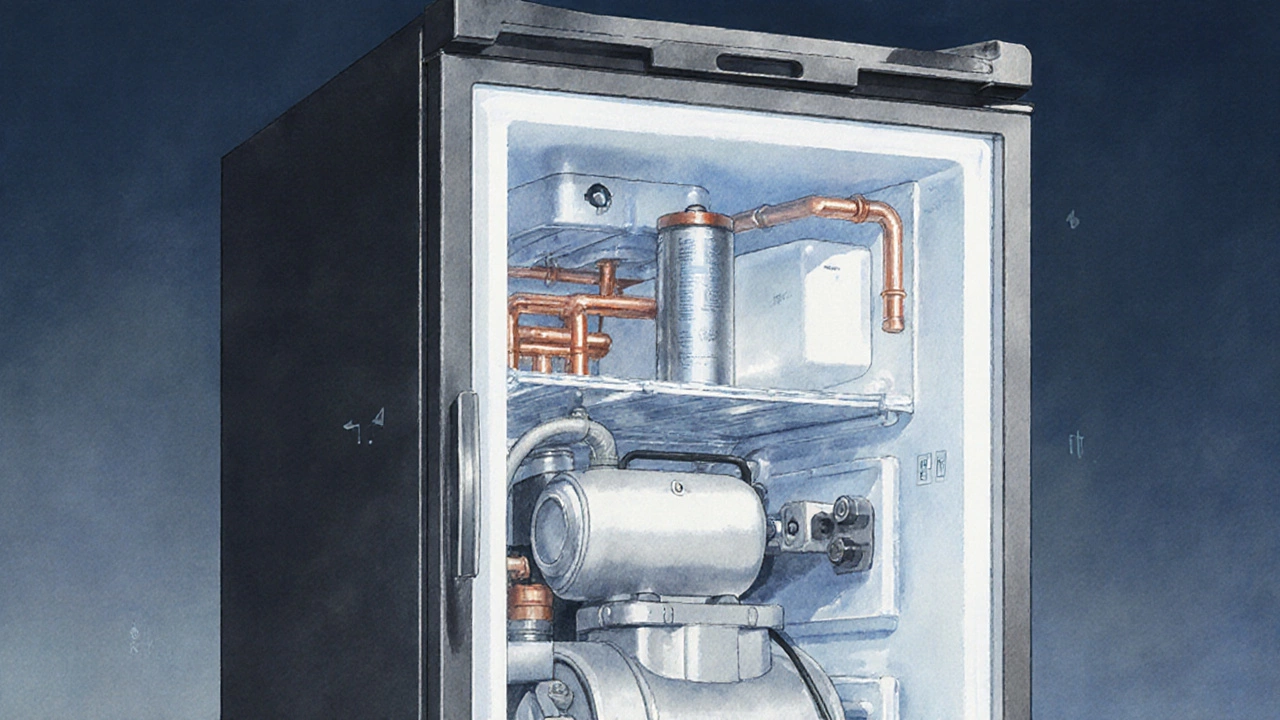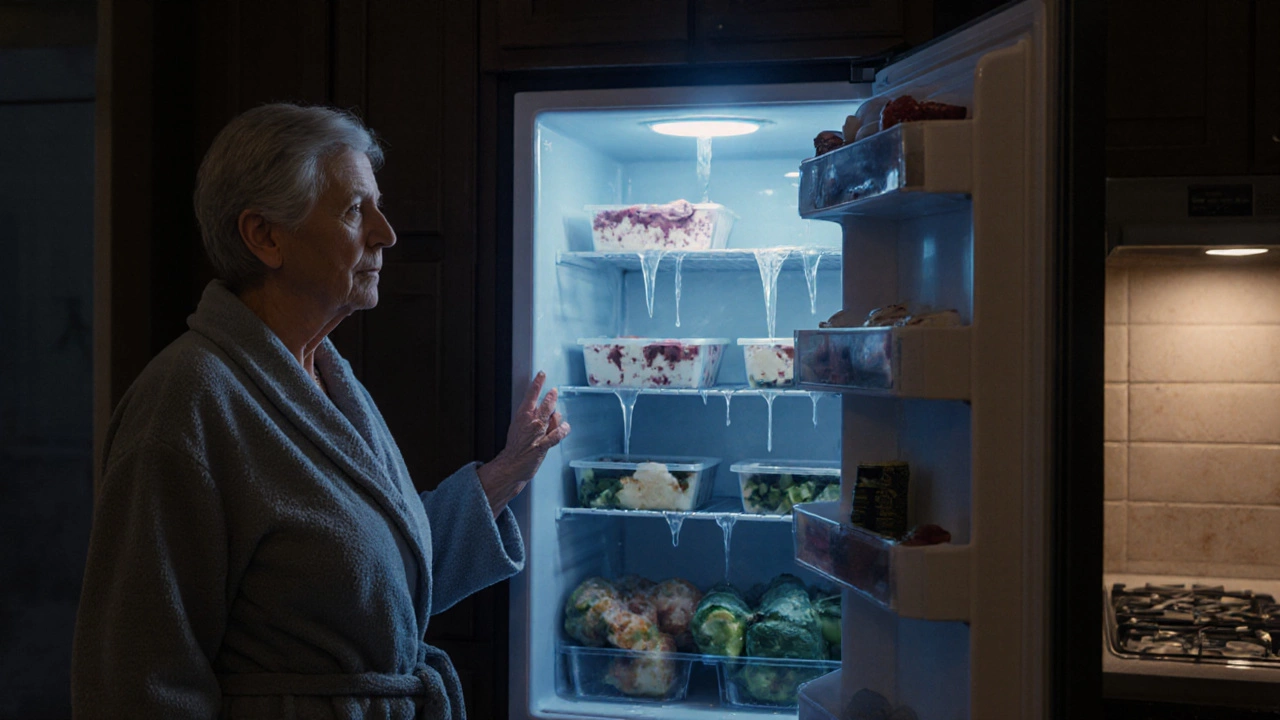Freezer Troubleshooting Guide
Select symptoms below to identify the likely cause and solution for your freezer issue.
Freezer Won't Power On
No power to the unit at all
Compressor Runs But Freezer Stays Warm
Unit running but not cooling properly
Quiet, No Compressor Sound
No sounds from the freezer
Thick Frost on Back Wall
Ice buildup indicating defrost issue
Door Seal Torn or Warm Air Leak
Air entering through the door
Compressor Makes Loud Clunk
Signs of internal compressor failure
Diagnosis Result
When your freezer goes dead overnight, the panic sets in fast - frozen foods start to melt, the kitchen smells off, and you wonder if it’s a simple plug‑in issue or something far more serious. Below you’ll get a clear picture of why a freezer can quit on you, how to pinpoint the exact problem, and when to call in a pro. No vague advice, just practical steps you can try right now.
Quick Summary
- Check the power source and circuit breaker.
- Inspect the door gasket for leaks.
- Listen for the compressor and fan; silent operation often means a motor or relay issue.
- Look for ice buildup on the evaporator coil - a frozen coil means the defrost system failed.
- If the thermostat, start relay, or capacitor is faulty, it’s time to call a tech.
How a Freezer Works - The Core Components
Understanding the basics helps you spot the faulty part faster.
Freezer is a sealed, insulated cabinet that keeps food below 0°C using a closed‑loop refrigeration cycle. The cycle relies on a few key pieces:
- Compressor - the heart of the system; it pressurises refrigerant gas, turning it into a hot liquid.
- Condenser coil - releases heat from the hot liquid to the surrounding air.
- Evaporator coil - located inside the freezer; the liquid expands, evaporates, and absorbs heat, creating the cold air.
- Thermostat - monitors the internal temperature and tells the compressor when to run.
- Defrost timer - periodically turns off the compressor and powers a heater to melt ice on the evaporator.
- Start relay and capacitor - give the compressor the boost it needs to start.
- Door gasket - the rubber seal that prevents warm air from leaking in.
When any of these parts fail, the freezer can lose its cooling ability almost instantly.
Top Reasons a Freezer Suddenly Stops Working
- Power interruption - A tripped breaker or a loose plug is the simplest culprit. In NewZealand many homes have separate circuits for high‑draw appliances; a blown fuse will cut power without any noise from the unit.
- Door gasket failure - Cracks, tears, or a compressed seal let warm air in. The compressor may run continuously, but the temperature never drops enough.
- Compressor malfunction - If the compressor is dead or makes a loud clunk, the refrigerant can’t circulate. This is a major failure and usually needs a professional.
- Defrost system breakdown - When the defrost timer or heater stops working, ice builds up on the evaporator coil. The coil becomes insulated, stopping heat exchange.
- Thermostat or temperature sensor error - A stuck thermostat may think the freezer is already cold, keeping the compressor off.
- Start relay or capacitor failure - These components give the compressor that initial kick. A click followed by silence often points here.
- Dirty condenser coils - Dust or pet hair on the back or bottom of the unit reduces heat rejection, causing the compressor to overheat and shut down.

Step‑by‑Step Diagnostic Checklist
- Verify power
- Check the wall outlet with a lamp or multimeter.
- Inspect the circuit breaker; reset if tripped.
- Listen for the compressor and fan
- A humming compressor and running fan mean the motor is alive.
- No sound at all suggests a motor, relay, or power issue.
- Examine the door gasket
- Close the door on a dollar bill; if it slides out easily, the seal is compromised.
- Look for cracks, gaps, or mould.
- Check for ice buildup
- Open the freezer and look at the back wall; a thick frost layer indicates a defrost failure.
- If you see heavy ice, turn off the unit, let it melt, and note the time until it refreezes.
- Inspect condenser coils
- Pull the back panel (unplug first) and vacuum the coils.
- Clean coils restore efficiency and can revive a seemingly dead unit.
- Test the thermostat
- Set the thermostat to the coldest setting; hear a click from the relay.
- If no click, the thermostat or its wiring may be faulty.
- Assess the start relay and capacitor
- Listen for a faint clicking sound when the freezer tries to start. A silent attempt often means the relay is dead.
- Use a multimeter (set to ohms) to test continuity; replace if out of spec.
Follow these steps in order - you’ll often find the issue within the first three checks, saving you time and a service call.
What to Do When You Identify the Problem
Here’s a quick guide on fixing the most common faults yourself, plus when to hand it over to a qualified technician.
| Symptom | Likely Cause | DIY Fix? | When to Call a Pro |
|---|---|---|---|
| Freezer won’t power on | Tripped breaker or loose plug | Yes - reset breaker, reseat plug | None |
| Compressor runs, freezer stays warm | Dirty condenser coils | Yes - clean coils | If still warm after cleaning |
| Quiet, no compressor sound | Failed start relay or capacitor | Yes - test and replace relay/capacitor | If relay tests OK but still silent |
| Thick frost on back wall | Defrost timer or heater failed | No - requires electrical testing | Immediately |
| Door seal torn, warm air leak | Gasket damage | Yes - replace gasket | None |
| Compressor makes loud clunk | Compressor internal failure | No - specialized repair needed | Immediately |
For DIY fixes, always unplug the freezer first. Use proper safety gear and keep a spare part kit handy - most local hardware stores stock gaskets, start relays, and capacitors at reasonable prices.
Preventive Maintenance to Keep Your Freezer Running
- Clean condenser coils every six months.
- Wipe the interior regularly to avoid moisture that fuels ice buildup.
- Check the door gasket monthly; a simple warm‑water wash can extend its life.
- Leave a few inches of space around the unit for proper airflow.
- Set the thermostat between -18°C and -15°C - lower settings waste energy and strain the compressor.
These habits cut down on the most common failures and keep the freezer humming for years.
Frequently Asked Questions
Why does my freezer make a buzzing noise but never gets cold?
A buzz often means the compressor is trying to start but the start relay or capacitor can’t give it enough torque. Test those components with a multimeter; replace if they show no continuity.
Can I replace a freezer compressor myself?
Technically you can, but it requires refrigerant handling certification in NewZealand. Improper disposal or refill can lead to legal penalties and safety hazards. Call a licensed appliance technician for compressor swaps.
My freezer runs constantly and the back is hot. Is that normal?
Yes, the condenser coil should feel warm as it rejects heat. However, if the compressor runs nonstop without a cooling dip, the thermostat may be stuck or the freezer could be overloaded.
What temperature should a freezer maintain for safe food storage?
Keep the interior at or below -18°C (0°F). This slows bacterial growth and preserves food quality for months.
Is it safe to run a freezer without a door for a short time?
Only for a few minutes. The sudden warm air influx can cause a rapid temperature rise, which may trigger the defrost timer and lead to frost buildup if left open too long.
By following the checklist above, you’ll quickly narrow down why your freezer stopped working and decide whether you can fix it yourself or need a qualified repair person. Remember, a well‑maintained freezer not only saves food but also cuts electricity bills - a win‑win for any household.

